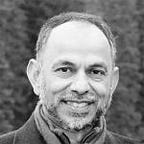Deciding under uncertainty: don’t abdicate responsibility by waiting too long
[For a more recent story, see Needed: Bold Decisions to Stop Covid-19]
The Camp Fire which started on Nov 8 in Butte County, 80 miles north of Sacramento, CA, has become the most devastating in recorded California history. It has also offered a teaching moment regarding decision making under uncertainty, particularly about decision timing and transparency around the decision process.
During the week of Nov 12, all eyes were on the air quality index (AQI) data put out by the EPA. Decision makers at schools, universities, local events, group camping trips, sports tournaments, etc., grappled with whether to remain open or closed on account of terrible and toxic air. Many cancellations were announced just hours or overnight before the start time. Santa Clara University announced closure on Friday at around 10 am of the same day. At UC Davis, classes were cancelled in this manner one day at a time starting Tuesday, for 4 consecutive days, with a “wait and see” approach.
These decisions should have been made early (in the case of the University I would say 2–3 days ahead), even with the disadvantage of incomplete information. Air quality maps (see below) and weather forecasts (wind speed, direction, precipitation) provide localized data to enable some degree of…
